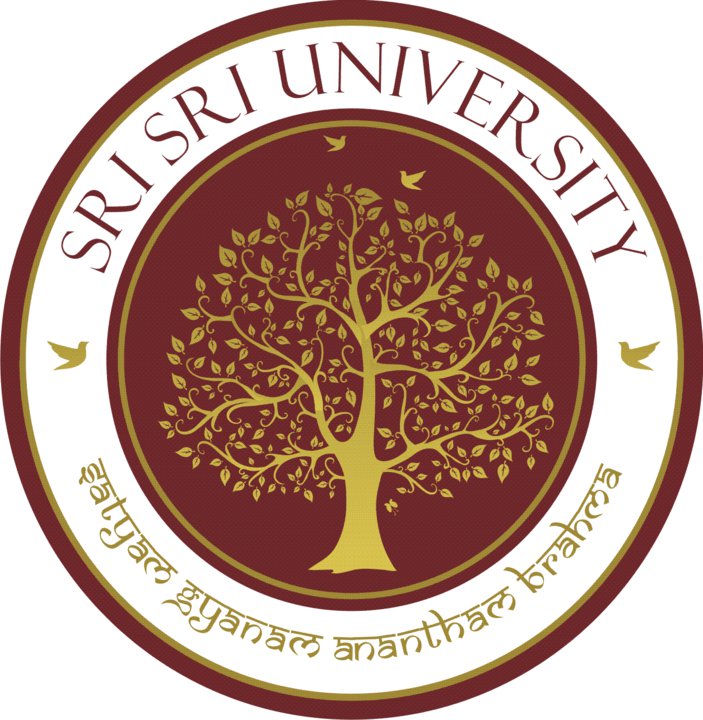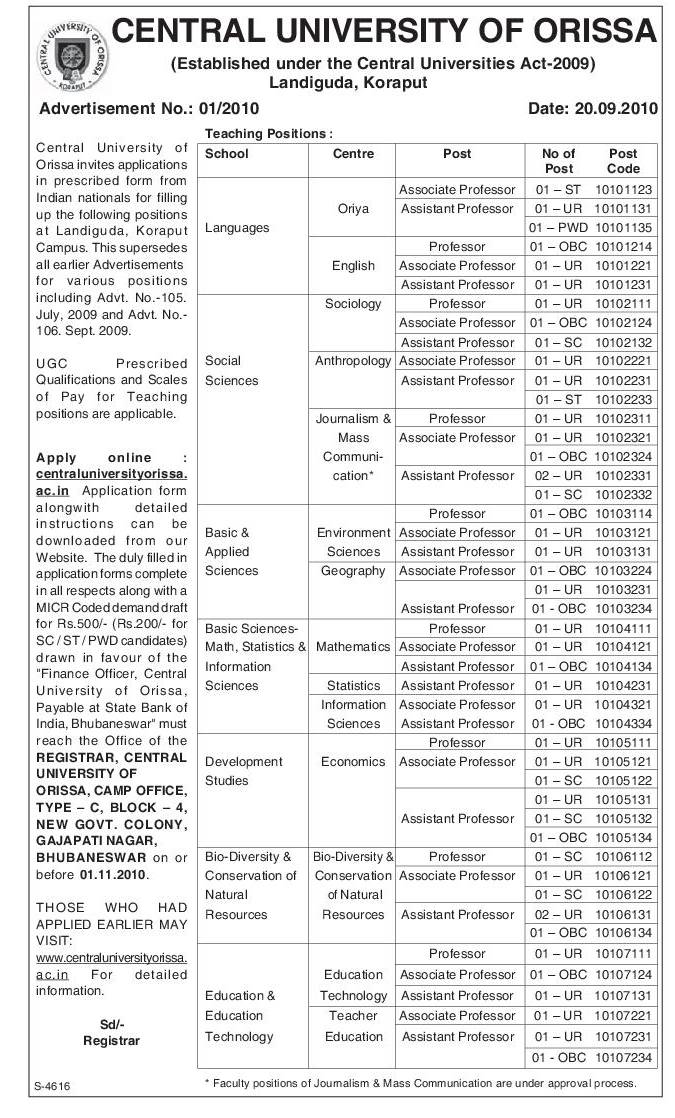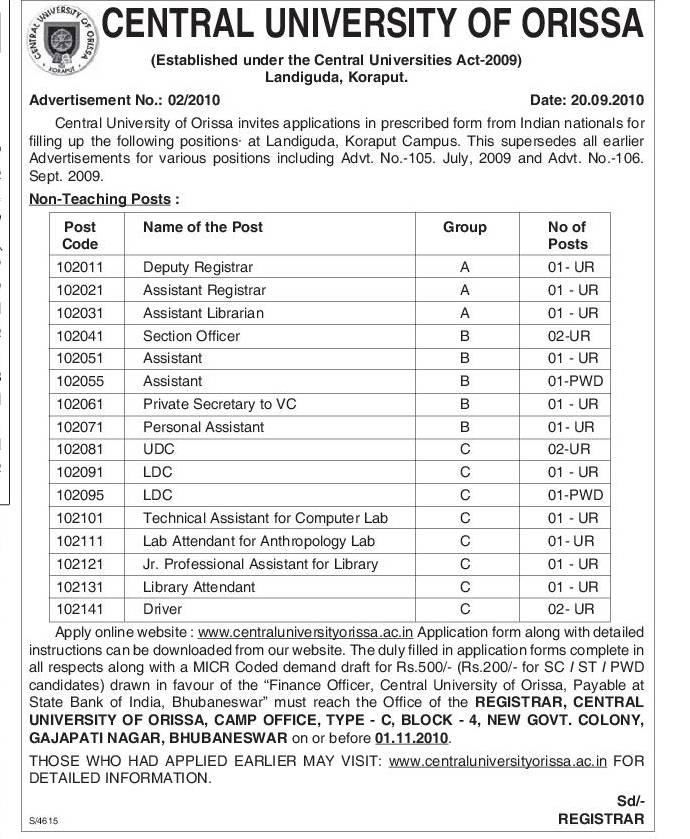Following is from http://pib.nic.in/release/release.asp?relid=66896.
The National Development Council has approved the setting up of fourteen Universities aiming at world class standards and dedicated to innovation. These universities are proposed to be located at Bhubaneswar in Orissa, Kochi in Kerala, Amritsar in Punjab, Greater Noida in Uttar Prdesh, Patna in Bihar, Guwahati in Assam, Kolkata in West Bengal, Bhopal in Madhya Pradesh, Gandhinagar in Gujarat, Coimbatore in Tamilnadu, Mysore in Karnataka, Pune in Maharashtra, Vishakhapatnam in Andhra Pradesh and Jaipur in Rajasthan respectively.
A concept paper finalized by the government is available on website www.education.nic.in and includes the scope for public private partnership.
The proposed universities for innovation are to be established across two plan periods of XIth and XIIth Plan.
This information was given by the Minister of Human Resource Development Shri Kapil Sibal, in a written reply to a question in the Lok Sabha today.
It was not clear to be what the National Development Council is. Searching in the web I came across the following:
The Planning Commission works under the overall guidance of the National Development Council, India’s prime policy-making body, which guides the nation on the development process.
The planning commission page http://planningcommission.nic.in/plans/planbody.html has the speeches of the PM and CM of various states in various National Development Council meetings. In the most recent meeting the PM addresses his cabinet colleagues, the CM and ministers from various state delegations, and the planning commission members.
November 10th, 2010
Following is an excerpt from a interview in http://chronicle.com/article/Yales-President-Talks-About/125273/.
Q. By "innovation," what do you mean? Could you give me some examples?
A. The biggest one is this: If India is going to build some truly high-quality institutions, it is going to have competitive compensation on a global scale. One of the things the Chinese have done, … they have essentially decided to break their salary scales to recruit back Chinese expats working in the U.S. and U.K. to be leaders and senior professors at their top institutions. And India has an extraordinary expat academic population. But it is very hard to get those people back in the public universities [here], because they are not attractive-enough jobs. So "innovation universities" offer hope that they’ll be able to provide competitive compensation and merit-based compensation.
Q. Did you talk with Kapil Sibal, India’s minister in charge of higher education, about this?
A. Yes, with the minister and many other people here. … The whole point of innovation universities is that both public and private innovation universities in the legislation [to allow for their creation] will have the possibility of not paying [faculty salaries] according to the standard scale.
Q. Why is that issue here in India important to you at Yale?
A. If the question posed to us is, Help us build world-class institutions, my first piece of advice is you can’t do it and pay people 20 percent of what they earn in the U.S. [He laughs.]
The last point is a very important one. While there are many top world class researchers in India, who are only paid 20% of what they would earn in the US, it is not possible to have a university full of such top (in terms of research) faculty by paying them only 20%; let alone have 14 such universities.
That is why there is a need of deep pocketed private benefactors of such universities.
November 9th, 2010
Following is an excerpt from a report in Indian Express.
“To boost innovation in basic sciences, the government is keen on funding and establishing world class institutes. We have recently established more IITs, IISERs and institutes in pharmaceutical science. On the same lines, the Cabinet has decided to establish IIESTs across the country,” said Prithviraj Chavan, Union Minister for State for Science and Technology.
He was inaugurating a seminar on Nano Technology: Materials and Composites for Frontier Applications, organised by Bharati Vidyapeeth University. Chavan did not commit that CoEP would feature on the list of five colleges to be converted into IIESTs, but said there was a possibility because the college has been trying to get deemed university status.
Odisha should remind the central government regarding its earlier request to upgrade VSSUT, Burla to an IIEST.
November 2nd, 2010
Following is from the face book page of Sri Sri University.

Selected as one of the twenty-five Most Powerful Women in Indian business by ‘Business Today’, India’s premier business magazine, 2008
Ms. Akhila Srinivasan is currently the Managing Director of Shriram Life Insurance Co. Ltd. which is a part of the $7.5 Billion Shriram Group, headquartered in Chennai, India.
Her extraordinary achievements stem from an intense personal philosophy and work ethic that have led her to become one of the key Board Level Executives of the Shriram Group, and the only female Managing Director. She is also among the very few Board Level female executives in the financial services sector in the country.
Ms.Akhila knows the importance of education and hard work; she holds a M.A., M.
Phil Degree in Economics and is currently pursuing her Ph.D.
Following is Sri Sri University’s logo as obtained from the above mentioned facebook page.

The university will start functioning in 2011 and will admit students in its business program. Following are some design diagrams of its business school taken from its facebook page: Sri Sri University Institute of Management Studies.




October 31st, 2010
Following is an excerpt from a report in expressindia.com.
Yale president Richard Levin on Thursday said that while China had worked on a “dramatic scale of advancement” in the education sector in the last decade, India has only now begun to work on that path. Speaking to The Indian Express after signing an MoU to launch the “India-Yale University Leadership Programme” with IIT Kanpur and IIM Kozhikode, Levin said India’s answer to China’s investment in high quality education was innovation.
“Making the advancement that China has made…that’s expensive. China has put in a lot of money in higher education… China has singled out 10 per cent of its national universities towards disproportionate investment in order to make them globally competitive,” Levin said. He added that India being a very democratic nation could not, on the other hand, single out certain institutes and provide them with funds in order to make them compete with the Ivy League. China has developed nine of its top universities in a way that they can compete with the US Ivy league.
“Whereas for India, which is a much more democratic country, it is harder to make those kinds of distinctions with government funds and say …we are going to take these five institutions and make them competitive with Yale, China is doing it and getting away with it. India’s answer is innovation universities and have the private sector raise extra resources to get really high quality institutions. That I think for India is a very adaptive strategy,” he said.
… The combination of opening to foreign universities, creating innovation varsities, reforming the accreditation — all of these I think will help for talent advance in higher education sector in India. I am very supportive of Mr Sibal’s vision and hope he is successful in his legislative agenda,” he said.
He, however, admitted that there were misgivings about ‘bureaucratic barriers” in India and that to attract foreign universities to India they would have to be allowed to set their own pay scales, promote/ advance people on their own criteria and bring students they approve by their own process.
October 30th, 2010
Following are excerpts from http://chronicle.com/article/In-India-a-Top-Private/125169/.
The Kalinga Institute of Social Sciences, known as KISS, has 10,000 students, and offers a full range of educational services, including primary and secondary school, vocational education, and undergraduate and graduate courses. It’s what Mr. Samanta and his staff like to call "a KG to PG" institution, that is, kindergarten to postgraduate. (In India, graduate programs are referred to as postgraduate programs.)
For the past nine years, all his tribal students entering grade 12—many of whom had probably never seen a chalkboard before they enrolled in KISS—have graduated. By comparison, Indian public high schools graduate only 60 to 70 percent of their senior classes, on average.
KISS’s vocational, undergraduate, and graduate programs complement one another, Mr. Samanta says, because the vocational courses teach students how to "earn while they learn." While they study in college, he says, they can continue to send a third of their earnings—about $15 to $20—to their parents. For people who may be living on as little as a dollar a day, it’s a significant amount.
KIIT University and the social-sciences institute are housed on a vast campus that is on par with the best Indian universities, with air-conditioned buildings, wireless Internet, multimedia classrooms, laboratories, and conference halls. The campus feels like an ashram with walkways connecting airy buildings and small ponds scattered throughout the grounds.
October 29th, 2010
Following is an excerpt from a report in Orissadiary.
As a part of corporate social responsibility (CSR) activities the Subarnarekha Port Private Limited (SPPL), which has undertaken the project for establishment of a port at Chaumukh, Balaiapal in the district besides renovating the Coast canal is mooting for establishment of a hi-tech 300-bed hospital initially and further a medical college within 30 km of port perimeter and a maritime university to meet the growing activities in the field in the state.
Among others, General Manager Mohan Chandra Mishra, advisor Pramod Kumar Singh, and SC Das and others company officials were present.
October 26th, 2010
The Central University of Orissa Koraput now has a professional looking web page at http://www.centraluniversityorissa.ac.in/. It is still under development though. Following are the ads from Samaja.


September 27th, 2010
Following is from a Business Standard report in sify.com.
The Siksha ‘O’ Anusandhan University (SOAU) in Bhubaneswar has set up a new Law Institute from the 2010-11 academic year following permission given by the Bar Council of India. …
The new institute will be known as SOA National Institute of Law (SNIL) which will have thrust on quality education in law keeping in view the contemporary society with semantic human resources, curriculum and co-curriculum aspects and will offer Five-Year Integrated Law studies in three different streams such as BA LLB, BBA LLB and B.Sc LLB besides Post-Graduation in Law and Ph.D. in Law.
The SNIL proposes to introduce several career oriented course in Intellectual Property Rights, Information and Technology, Labour-Man Power related Industrial Law, Human Rights, International Humanitarian Law, International Trade Laws, Competition Laws, Space Law, Biomedical Law, Bio-ethics and Law, International Advocacy, Arbitration as a mode of Alternate Dispute Redressal Mechanism, e-Governance, e-Commerce and Corporate Law.
With this program Odisha will have three places with 5 yr programs that will take students nationally. They are:
I was told by reader Debi Sarangi (Thanks!) that Madhusudan Law College in Cuttack and University Law College Bhubaneswar also have 5 yr law programs. I am not sure if the other universities, especially Sambalpur and Berhampur, have such programs. If not they should. In addition I hope VSSUT starts a graduate program in Intellectual Property Law (similar to the one in IIT Kharagpur) and all the universities in the state have 5-yr integrated courses in law as well as sciences.
September 21st, 2010
Following is from Dharitri.

Note that OUAT has had a Department of Forestry since 1987. Following are excerpts from a report in the Telegraph about this new college.
… Apart from the usual four-year graduate programme in forestry, the college has announced PG programmes in agro-forestry, forest products, environment management, plant genetic improvement and forest business management for the current academic year 2010-11.
Each course has six seats with four reserved for candidates from Orissa.
Two seats would be offered to students from other states and abroad.
… Addressing mediapersons here today, Prof Rabindra Kumar Patnaik said: “With the launch of these PG programmes, more students will get opportunities to work in sectors such as afforestation drives, reclamation of land after mining, research positions in forestry. The demand for such students is quite good outside India.â€
The College of Forestry, … has become the 16th institute in the country to have PG programmes on the subject.
“It has also faculties for five departments like silviculture and agro-forestry, forest products and utilisation, forest biology and tree improvement, natural resource management and forest policy and law,’’ he said.
“Apart from academics and creating quality human resources in forestry, this newly-opened College of Forestry will address many research issues on forestry, livelihood, natural resource management (NRM), tree improvement and problems of climate change. It will also address many policy issues on forestry and environment,’’ he added.
… PG programme in forestry is not offered anywhere else in the eastern part of India,†he said.
September 20th, 2010
Recall from https://www.orissalinks.com/archives/5524 where we reported the following:
… The NIC will also have innovation centres in universities and innovation clusters to create regional hubs….
“Those clusters will be selected where there is a minimum critical mass of industries of some kind and then we will give them an innovation toolkit. The toolkit will be a set of guidelines on how to innovate. Moreover, we are also selecting 20 universities, besides the Indian Institutes of Technology (IIT) where we can do seed innovation,” he said.
Prof Sanjay Dhande, IIT Kanpur director, who is a member of the Council, is in the process of identifying the universities which will then be given the innovation toolkit to be able to connect with industry.
We had contacted the Govt. of Odisha as well as the VCs of VSSUT and Sambalpur University about it. (I think some other people and groups may have done something similar too.)
The Government of Odisha has now asked VSSUT Burla to prepare a proposal in response to it. This is a good move. However, I think a joint proposal from VSSUT and Sambalpur University may be stronger and this is important if Prof. Dhande goes strictly by merit (without taking state representation – one from each major state — into account). Following is from Samaja. (The part in red is confusing. The reporter did not understand the difference between "Innovation University" and "universities where GOI will seed innovation".)

September 18th, 2010
Following is an excerpt from a report in Business Standard.
The newly constituted National Innovation Council (NIC) headed by Sam Pitroda, aims to have a $1-billion (around Rs 4,600 crore) fund to promote new ideas for inclusive development and innovation in the country.
“Our objective is to setup a $1-billion fund for the NIC but how big it will be depends on how the market reacts and how much money we are able to raise. We want to see if we can set up a large fund,” Pitroda, advisor to the PM, told Business Standard.
A week ago, the Council had announced the setting up of a fund with a corpus of Rs 1,000 crore to encourage innovation. The government will contribute 10-20 per cent to the fund with the rest coming from other sources like private funds, institutions and foundations.
Last month, Prime Minister Manmohan Singh had approved the establishment of the Council with a mandate to prepare a road map for the Decade of Innovation (2010-2020) by evolving an Indian model of innovation, focusing on inclusive growth and creating an appropriate ecosystem.
Going ahead, innovation councils will be set up at the state and sectoral levels and Pitroda said that five states, including Orissa and Karnataka, have already shown interest in setting up their own innovation councils. The NIC will also have innovation centres in universities and innovation clusters to create regional hubs.
It will delineate appropriate policy initiatives within the government to spur innovation. It will also promote setting up of Sectoral Innovation Councils and State Innovation Councils.
The NIC has also collaborated with industry chambers CII and Ficci to identify 20 industrial clusters in the country like Indore, Bhopal, Gandhinagar and Kanpur, among others, to provide guidelines for innovation.
“Those clusters will be selected where there is a minimum critical mass of industries of some kind and then we will give them an innovation toolkit. The toolkit will be a set of guidelines on how to innovate. Moreover, we are also selecting 20 universities, besides the Indian Institutes of Technology (IIT) where we can do seed innovation,” he said.
Prof Sanjay Dhande, IIT Kanpur director, who is a member of the Council, is in the process of identifying the universities which will then be given the innovation toolkit to be able to connect with industry.
Odisha should lobby to have at least one industrial cluster (perhaps Rourkela) in the list of 20 clusters and lobby to have at least one university in the list of 20 universities to which innovation toolkit will be given. I think VSSUT and Sambalpur University should join hands to stake claim for one of the 20 university slots. Considering their proximity, it may work.
The setting up of the innovation council was approved a month month back. Following is an excerpt from another report in Business Standard.
Last month, the prime minister had approved the setting up of the council to prepare a road map for the Decade of Innovation 2010-2020. The council also launched its portal, where a compilation of scientific achievements that could be used to improve the quality of life would be available.
A similar council called National Advisory Council on Innovation and Entrepreneurship was formed by the Commerce Department in the USA in 2009. In July 2010 its membership was announced.
September 15th, 2010
Vizag is getting antsy about the delay in the establishment of one of the aiming to be "world class" universities in that city. Deccan Chronicle reports on this issue. Following is an excerpt.
The much-touted “world-class university” in Visakhapatnam has failed to take off though it has been more than two years since the Centre announced the project.
In 2008, the Union HRD ministry had announced plans of 14 “world-class universities” across the country, of which one was allotted to Andhra Pradesh. The state government had also come forward and offered around 800 acre in Visakhapatnam to set up the varsity.
Though the university was later renamed by the Centre as “Innovation University”, officials of the higher education department are clueless about when the actual works will begin.
The state government had identified four sites in Vizag for the purpose and submitted a proposal to UMHRD for clearance. However, there has been no response from the Centre till now.
Sources in the department of higher education said the Centre’s stand about setting up the “Innovation Universities” has changed and that’s the reason for the delay.
… However, the Union minister of state for HRD, Ms D. Purandeswari said the world-class university would be a reality in Vizag in a year. “It is still being discussed how a world-class university should be. So, there is some delay. I cannot give an exact time-frame but in a year a world-class university would definitely be a reality in Visakhapatnam,’’ she said.
Note that Purandeswari is the sitting MP from Vizag.
It should be noted that a draft bill of the Universities for Innovation was circulated and discussed recently. It is expected that a revised version of it may be introduced in the parliament in the winter session. I guess following that starting from August 2011 at least a few of these universities will start operation. The 14 locations that were announced were: Amritsar, Bhopal, Bhubaneswar, Coimbatore, Gandhinagar, Guwahati, Jaipur, Kochi, Kolkata, Mysore, NOIDA-Delhi, Patna, Pune and Vizag. There will be minor funding for these universities during this five year plan. The major funding will come during the 12th plan that starts from 2012.
September 14th, 2010
Following is an excerpt from a report in Times of India.
Facing a massive shortage of well-qualified teachers, the prestigious Indian Institutes of Technology (IIT) have mooted a proposal for hiring foreign nationals as permanent faculty members.
With one-third teaching positions lying vacant, the proposal as a solution to meet the unprecedented staff crunch is expected to be deliberated at the next IIT council meeting on Friday, IIT officials said.
The move, if accepted, would enable the premier engineering and technology institutes to appoint foreign teachers on permanent positions, up to 10 per cent of the faculty strength.
I hope this proposal by the IITs is approved and the limit is increased from the proposed 10%.
Most universities in US, Europe, Australia, Hong Kong, Singapore etc. are able to hire foreign faculty in permanent positions. The inability of IITs and other Indian institutions to do that hurts them. This will also serve as an experiment to see how attractive the salary offered by the IITs is to foreign faculty that are not of Indian origin. The data and experience gathered from this experiment will be useful for the universities of innovation which are supposed to be unconstrained by the government in terms of salary offered to its faculty. The concept note of these universities already talked about allowing hiring of foreign faculty.
September 9th, 2010
Following are excerpts from a report in University World News.
… "These universities will focus a lot on research and development and industry-academia collaboration. Besides the conventional streams of knowledge, research and development in emerging areas like global warming, food security, agriculture and community health will get prime focus," Sibal said after the consultation on 28 August with vice-chancellors, academics and business and industry organisations.
Universities themselves will decide their area of focus. However, Sibal said, they "should essentially identify areas having a direct bearing on the community."
Apart from the 14 public universities to be set up under the bill, private players could set up more institutions within the prescribed framework.
The new universities will be allowed to admit half their students from abroad, teach foreign curricula and hire teachers and even vice-chancellors who are foreign nationals, according to a draft law circulated by the government.
"Every university of innovation shall provide an ambience of learning that has an international flavour," states the Universities for Innovation Bill 2010, though "not less than half" the students should be Indian nationals".
The universities will not come under the purview of the University Grants Commission, which regulates most universities in India. The UGC caps the enrolment of foreign nationals at 15%.
Instead they will be set up with private help and be self-regulated, with half their board members being independent experts of academic eminence. They will also be free to set up more than one campus, including outside India.
Some of the universities will be set up in collaboration with leading American and British universities. Yale University, for instance, is already in talks with the education ministry and wants to develop leadership programmes for the new universities.
Innovation universities will be allowed to teach both Indian and foreign curricula simultaneously, and issue degrees that need not comply with established Indian norms.
The bill allows each innovation university to frame its own policy to attract faculty members from India and abroad and hire them directly, offering wages and perks that it deems fit. Currently, the government clears all faculty appointments and decides the salary structure of teachers in government and government-aided institutions.
There was overwhelming support for more flexibility in appointing faculty members. "The heart of this bill is innovation. We want to give the required freedom for innovation and not stifle promoters with regulations like appointing vice-chancellors through collegiums," said Sibal, referring to the current system of selection university heads.
Lifting an existing 20% cap on appointing professors by invitation was also discussed. In the meeting "stakeholders asked to do away with the rule", Sibal said. A senior academic argued: "Why limit it to 20%? Let the innovation universities decide."
A key suggestion during the consultation was that since the universities will be innovative in nature, the bill should clearly define the outcomes it plans to achieve. Administrative structure, too, figured prominently in the discussion.
Sibal said most of the suggestions that came up in the consultation were likely to be incorporated in the final draft of the bill, which will probably be introduced into parliament during the winter session.
Most of the points above have been covered in earlier articles. The only new point here is that these universities will be free to have multiple campuses. This is significant. For the one in Bhubaneswar, the government should allocate land in multiple locations inside Odisha (some far from Bhubaneswar), perhaps from the beginning itself.
September 6th, 2010
The following were obtained from various sources. I don’t vouch for their 100% correctness. Please use them at your own risk.
September 2nd, 2010
Next Posts
Previous Posts









